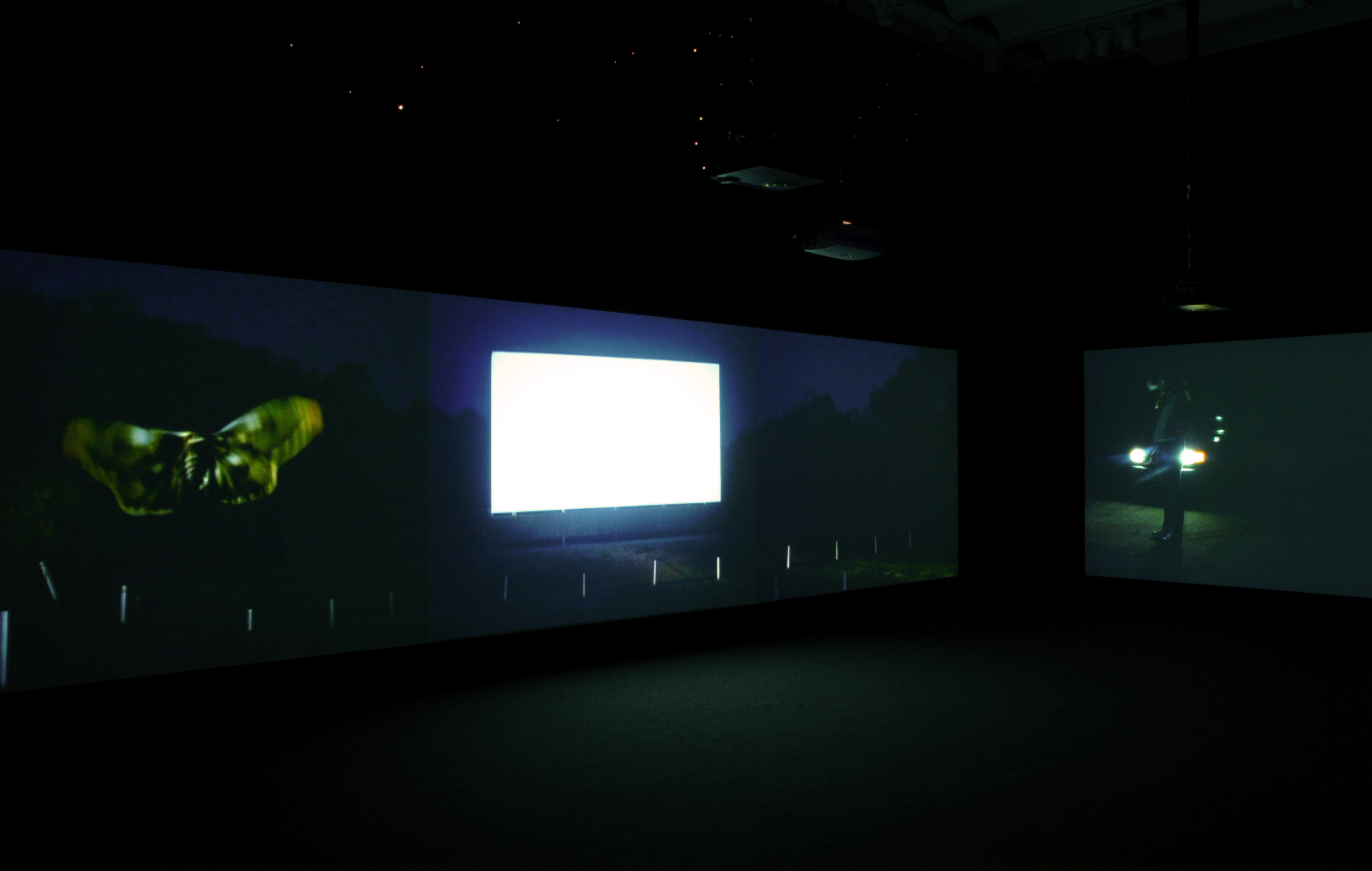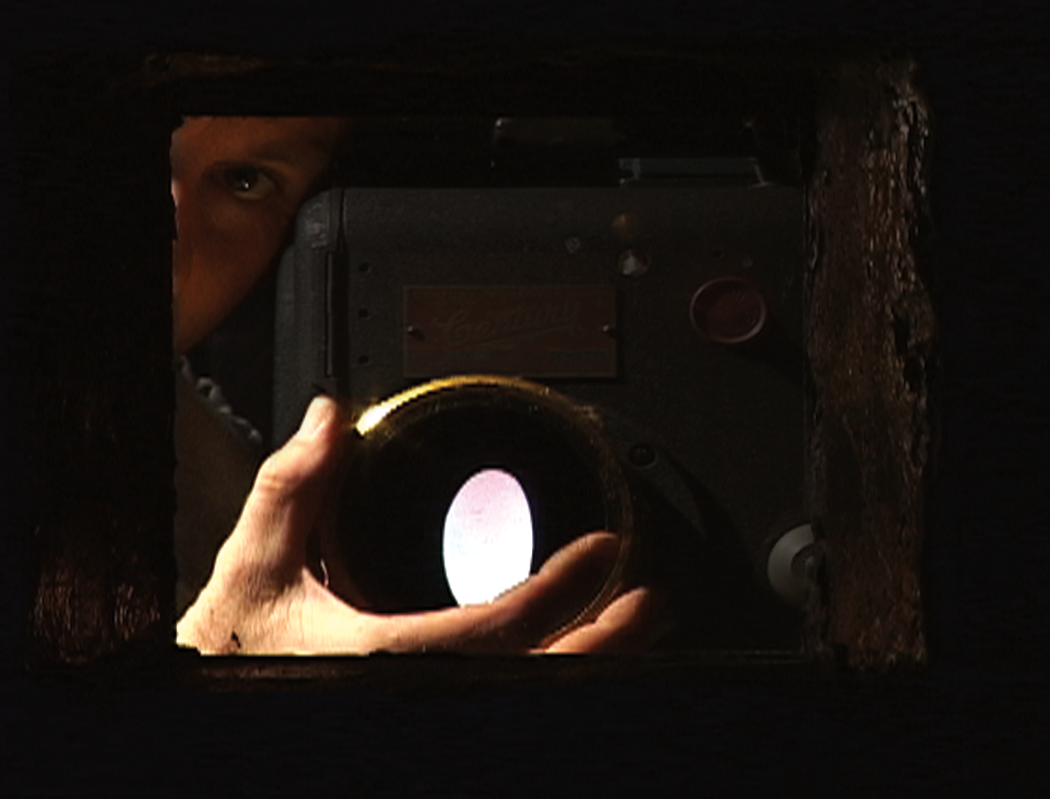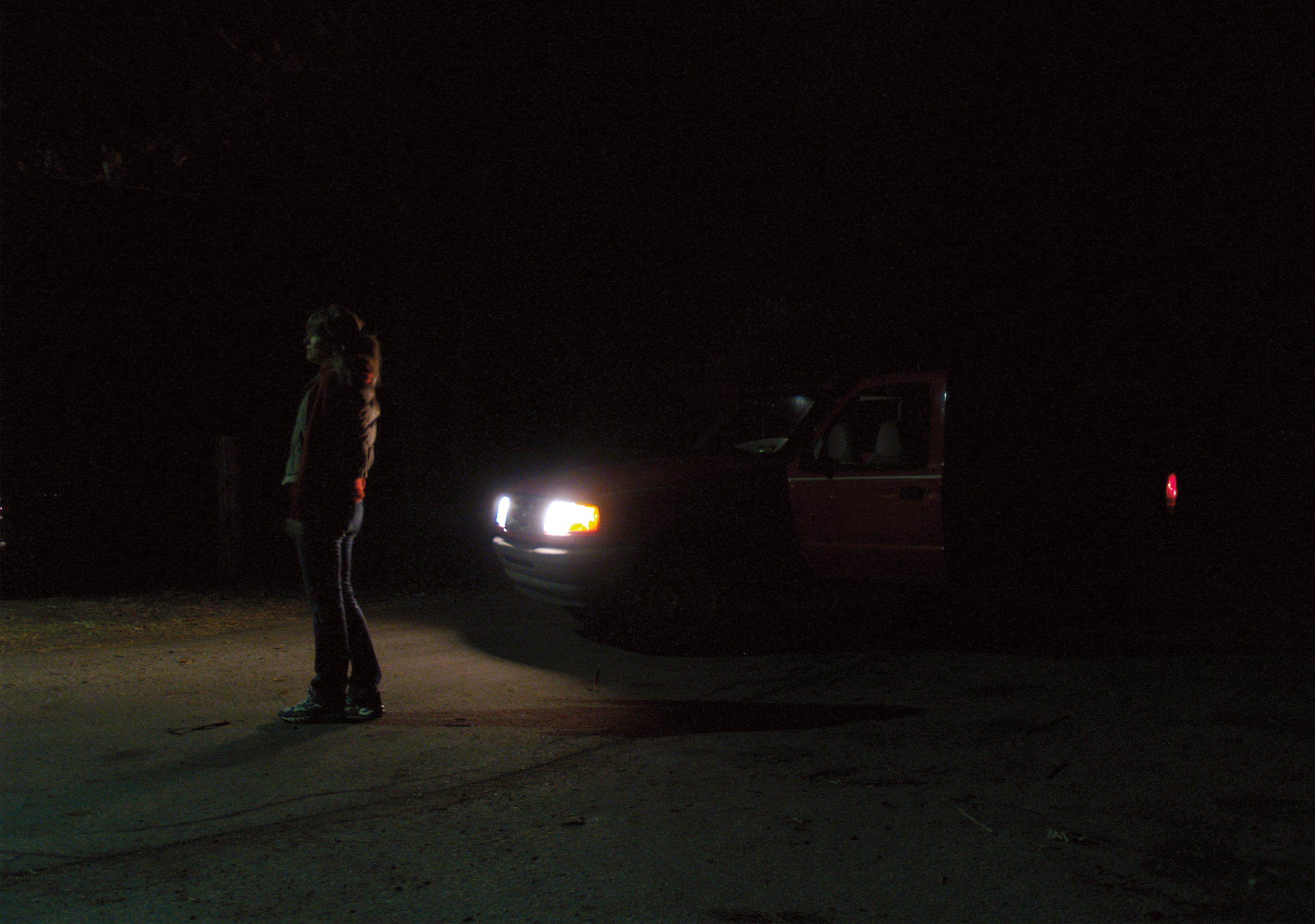The Late Show —
2006, multi-channel video installation with surround sound audio
In her multi-channel video installation, The Late Show, Nadia Hironaka expands the cinematic experience into the realm of the gallery environment. Synthesizing video projection, videos on monitors, and audio, Hironaka entices the viewer to imagine characters leaving the confines of the projected image and entering the real space of the gallery. Using an abandoned drive-in movie theater as her point of departure to examine the convergence of cinematic and real space, Hironaka also asks us to reflect on how mood and emotion are constructed within the context of film.
The first projection is of an empty drive-in theater (which is actually composed of three channels, or three projected videos). Working with the projectionist of the Garden Drive-In, located near Nanticoke, Pennsylvania, Hironaka recorded a wide-angle view of the theater while a film projector projected light (no image) on to the large outdoor movie screen. Hironaka digitally created a flying moth that is superimposed on the illuminated screen; her artificial moth accompanies several other insects that appeared in the light on the evening of the shoot. A lone automobile idles near the front row, closest to the screen.
Across the gallery, another video projection tells a fragmented story of a woman driving a car and following a comet through the night sky. Her journey takes her to the abandoned drive-in, where she parks. Leaving the car, she flicks her cigarette on the ground, she exits the video, where she remains off screen, her car, headlights on, now the only remaining image. A video monitor on the floor of the gallery captures a vignette of a cigarette smoldering on the ground. The viewer hears the woman’s footsteps and recognizes her presence, although she is no where to be seen. The sound of breaking twigs is accompanied by the ambient chirping of crickets and hooting of owls. Here, Hironaka goes outside the projected image to convey narrative by employing sound and video images on separate monitors. Adjacent to the video projection on the same wall, a small television monitor pears through an opening. On the monitor, a video documents a lens in the process of being focused by a film projectionist and then the projector lens itself in the midst of its illuminated throw, the simulated projector lens is in effect projecting the image of the drive-in movie scene located across the room. Hironaka’s representation of the burning cigarette and projector lens on small monitors shares some kinship with trompe l’ oiel painting, whereby a painted image of an object tricks the viewer into thinking s/he is seeing the real thing.



